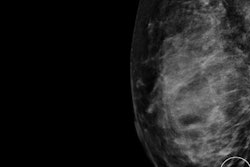Dear Artificial Intelligence Insider,
Since the onset of the COVID-19 pandemic, there has been a flurry of efforts to develop useful radiology artificial intelligence (AI) algorithms to assist in the diagnosis, assessment, and monitoring of patients.
Recently, a research team from the Netherlands has developed a freely available AI algorithm that can, using standardized scoring systems, assess the likelihood and severity of the disease on noncontrast-enhanced chest CT exams.
In testing, the algorithm -- called CORADS-AI -- yielded high diagnostic accuracy, as well as severity assessments that had moderate-to-substantial agreement with radiologists. Our coverage of the research is the subject of this edition's Insider Exclusive.
Speaking of COVID-19, an algorithm called a convolutional Siamese network was able to quantitatively assess disease severity by analyzing frontal chest x-rays.
Over the last couple of years, federated learning has drawn a lot of attention and interest for its potential to improve the generalizability of AI algorithms by making it easier to incorporate data from other institutions without affecting patient privacy. A team of researchers recently shared a success story from using federated learning to develop an AI algorithm for detecting tumors on brain MRI scans.
A Swedish group recently made the case for computer-aided detection software in breast cancer screening, highlighting the wide range of sensitivity of radiologists for finding cancer on mammograms. AI was also shown to improve tracking of liver lesion changes on MRI, and it can bolster radiologist performance in identifying hip fractures on radiographs.
The combination of AI and radiomics can also help to predict if a particular treatment strategy for ischemic stroke will be successful, potentially paving the way for personalized endovascular patient management. What's more, quantitative analysis of texture patterns in interstitial lung disease patients can yield better survival predictions than a radiologist's classification of usual interstitial pneumonia (UIP) versus non-UIP.
AI can also preoperatively identify lymph node metastasis on MRI in cervical cancer patients, as well as reduce the number of missed lung cancers on chest x-ray.
In a recent talk at ECR 2020, a Spanish expert told meeting registrants that greater involvement by radiologists and more help from data scientists are needed to improve the performance of AI algorithms and expand the use of AI in clinical practice.
An AI model can be highly accurate for diagnosing Parkinson's disease on dopamine transporter SPECT exams, according to research presented at the annual meeting of the Society of Nuclear Medicine and Molecular Imaging.
Are medical students in the U.S. avoiding radiology due to fears that AI will replace radiologists? If the results of a survey are any indication, this misperception could pose a far bigger threat to the specialty than the technology itself, according to a recent study.
A presentation at the virtual annual meeting of the Society for Imaging Informatics in Medicine (SIIM) reported that a convolutional neural network could help abdominal radiologists better identify and classify kidney cancer on CT.
In other talks at SIIM 2020, researchers shared how AI can help to highlight incidental cases of pulmonary embolism on contrast-enhanced chest CT exams and nearly halve breast ultrasound reading time. Also, presenters discussed the need to evaluate the technology's real-world impact on efficacy and efficiency, and reviewed the challenges and opportunities for creating robust radiology AI algorithms.
Do you have an idea for a story you'd like to see covered in the Artificial Intelligence Community? Please feel free to drop me a line.




















